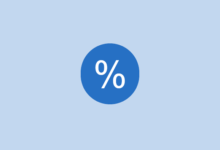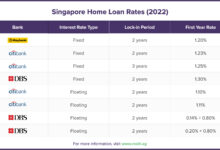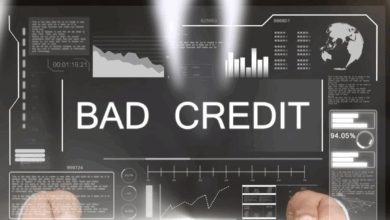Lowest Home Equity Loan Rates: Find The Best Deals Today
Lowest home equity loan rates provide homeowners with a valuable opportunity to save money and secure affordable financing options. In this detailed exploration, we uncover the secrets to finding the most competitive rates in the market.
From understanding the importance of rates to comparing fixed and variable options, this guide offers a comprehensive overview that empowers borrowers to make informed decisions.
Importance of Home Equity Loan Rates
Understanding home equity loan rates is crucial for homeowners as it directly impacts their finances and overall loan repayment. These rates determine the cost of borrowing against the equity in your home, which can significantly affect your monthly payments and the total amount you repay over time.
Impact of Low Rates
Low home equity loan rates can save homeowners money in the long term by reducing the overall interest costs. For example, a lower rate means lower monthly payments, freeing up more cash for other expenses or savings. Over the life of the loan, even a small decrease in interest rate can result in substantial savings.
- For instance, with a $100,000 home equity loan at a 4% interest rate, the monthly payment would be approximately $460. If the rate dropped to 3.5%, the monthly payment would decrease to around $450, saving $10 each month.
- Similarly, over a 10-year term, a difference of just 0.5% in interest rate on a $50,000 loan could save the homeowner over $3,500 in total interest payments.
Factors Influencing Home Equity Loan Rates
When it comes to home equity loan rates, there are several key factors that lenders take into consideration before offering a rate to borrowers. These factors can vary depending on the lender and the current economic conditions. Let’s delve into the main determinants that influence home equity loan rates.
Credit Score
Your credit score plays a crucial role in determining the interest rate you will be offered on a home equity loan. Lenders typically offer lower rates to borrowers with higher credit scores, as they are considered less risky. A good credit score demonstrates your ability to manage debt responsibly, which makes you a more attractive borrower to lenders. On the other hand, if you have a lower credit score, you may be offered a higher interest rate to compensate for the perceived risk.
Loan-to-Value Ratio
The loan-to-value (LTV) ratio is another important factor that lenders consider when determining home equity loan rates. This ratio compares the amount of the loan to the appraised value of the property. A lower LTV ratio indicates that you have more equity in your home, which can help you secure a lower interest rate. Lenders may offer higher rates to borrowers with a higher LTV ratio, as they are seen as more likely to default on the loan.
Economic Conditions
The overall economic conditions can also have a significant impact on home equity loan rates. In times of economic uncertainty or instability, lenders may increase rates to mitigate their risks. On the other hand, when the economy is strong and stable, lenders may offer more competitive rates to attract borrowers. Factors such as inflation, the housing market, and the Federal Reserve’s monetary policy can all influence home equity loan rates.
Comparison of Fixed vs. Variable Rates
When it comes to home equity loans, borrowers often have the option to choose between fixed-rate and variable-rate loans. Each type of rate comes with its own set of risks and benefits, and understanding the differences can help borrowers make informed decisions based on their financial goals and circumstances.
Fixed-rate home equity loans offer stability and predictability in monthly payments. The interest rate remains constant throughout the life of the loan, providing borrowers with a sense of security knowing that their payments will not fluctuate. This type of loan is ideal for individuals who prefer consistency and want to budget effectively without worrying about potential rate increases.
On the other hand, variable-rate home equity loans, also known as adjustable-rate loans, have interest rates that can change periodically based on market conditions. While initial rates may be lower than fixed-rate loans, there is a risk of rates increasing over time, potentially leading to higher monthly payments. However, if interest rates remain low or decrease, borrowers may benefit from lower payments and overall savings.
Benefits of Fixed-Rate Home Equity Loans
- Stable monthly payments for the entire loan term.
- Predictable budgeting and financial planning.
- Protection against rising interest rates in the market.
Benefits of Variable-Rate Home Equity Loans
- Potentially lower initial interest rates compared to fixed-rate loans.
- Possibility of decreased payments if interest rates drop.
- Opportunity to benefit from a declining interest rate environment.
In scenarios where interest rates are expected to rise steadily, opting for a fixed-rate home equity loan can provide peace of mind and protection against higher payments in the future. On the other hand, if market conditions suggest that interest rates may decrease or remain stable, a variable-rate loan could offer cost savings and lower initial payments. Ultimately, the choice between fixed and variable rates depends on individual preferences, risk tolerance, and financial goals.
How to Find the Lowest Home Equity Loan Rates
To secure the lowest home equity loan rates, it is essential to conduct thorough research and comparison among different lenders. By exploring multiple options, you can ensure that you are getting the best possible rate for your loan.
Research and Compare Lenders’ Rates
- Start by researching various lenders in your area or online to compare their home equity loan rates.
- Look for reputable lenders with competitive rates and favorable terms.
- Consider both traditional banks and online lenders to find the best rate for your financial situation.
Shopping Around for the Best Rates
- Don’t settle for the first offer you receive – shop around and compare rates from multiple lenders to ensure you are getting the lowest rate possible.
- Be sure to consider additional fees and closing costs when comparing rates to get a full picture of the loan’s affordability.
Negotiating for Lower Rates
- Don’t be afraid to negotiate with lenders to see if they can offer you a lower rate based on your creditworthiness and financial stability.
- Highlight any positive factors, such as a steady income or low debt-to-income ratio, that may help you secure a better rate.
Impact of Credit Score
- Understand that your credit score plays a significant role in determining the interest rate you will receive on a home equity loan.
- Improve your credit score by making timely payments, reducing debt, and checking your credit report for any errors before applying for a loan.
Fixed vs. Variable Interest Rates
- Learn the difference between fixed and variable interest rates to make an informed decision based on your financial goals and risk tolerance.
- Fixed rates offer stability and predictable monthly payments, while variable rates may fluctuate based on market conditions.
Using Online Loan Comparison Tools
- Utilize online loan comparison tools to easily compare rates from different lenders and find the best offer for your home equity loan.
- Enter your financial information and desired loan amount to receive personalized rate quotes from multiple lenders in minutes.
Benefits of Pre-Qualification
- Consider pre-qualifying for a home equity loan to determine the interest rate you are eligible for before formally applying.
- Pre-qualification can help you negotiate with lenders and secure a lower rate based on your financial profile and creditworthiness.
Strategies for Improving Credit Score
- Prioritize improving your credit score before applying for a home equity loan by paying down debt and resolving any outstanding issues on your credit report.
- Monitor your credit score regularly and take steps to boost it, such as keeping credit card balances low and avoiding new credit inquiries.
Understanding APR vs. Interest Rates
When it comes to home equity loans, understanding the difference between APR and interest rates is crucial for borrowers to make informed decisions. While interest rates represent the cost of borrowing the principal amount, APR includes the interest rate plus any additional fees associated with the loan.
APR can help borrowers compare loan offers more effectively as it provides a more comprehensive view of the total cost of the loan. By considering both the interest rate and APR, borrowers can evaluate the true cost of borrowing and choose the most cost-effective option.
Factors Contributing to APR
- Origination fees: These are charges levied by lenders for processing a loan application.
- Closing costs: Expenses incurred during the closing of the loan, including appraisal, title search, and attorney fees.
- Other charges: Additional fees such as insurance premiums, taxes, and prepayment penalties.
Example Illustration
For example, a loan with a lower interest rate may seem attractive at first. However, if the APR is significantly higher due to high origination fees and closing costs, the overall cost of borrowing could be much higher compared to a loan with a slightly higher interest rate but lower fees.
Comparison Table: Interest Rates vs. APR
| Repayment Period | Interest Rate (%) | APR (%) | Total Cost of Loan |
|---|---|---|---|
| 5 years | 3.5% | 4% | $20,000 |
| 10 years | 4% | 4.5% | $30,000 |
| 15 years | 4.5% | 5% | $40,000 |
Impact of Market Trends on Home Equity Loan Rates
The fluctuating nature of the market can have a significant impact on home equity loan rates, influencing borrowers’ costs and overall financial decisions. Global events, economic indicators, and historical trends all play a role in determining these rates.
Historical Trends and Market Fluctuations
- Historically, major events such as economic recessions, political instability, and changes in monetary policy have led to fluctuations in home equity loan rates.
- For example, during the 2008 financial crisis, home equity loan rates plummeted as central banks implemented policies to stimulate the economy.
- Conversely, periods of economic growth and stability often see an increase in home equity loan rates as demand for loans rises.
Short-term vs. Long-term Trends
- Short-term market trends, such as quarterly economic reports or geopolitical events, can cause temporary fluctuations in home equity loan rates.
- On the other hand, long-term trends, like inflation rates and interest rate policies, have a more sustained impact on home equity loan rates over time.
Inflation Rates and Central Bank Policies
- Inflation rates play a crucial role in determining the direction of home equity loan rates, as lenders adjust rates to account for changes in purchasing power.
- Central bank policies, such as raising or lowering interest rates, can directly influence home equity loan rates by affecting the cost of borrowing for financial institutions.
Case Study: COVID-19 Pandemic
- The COVID-19 pandemic is a prime example of how a global event can impact home equity loan rates.
- As economies struggled and central banks implemented emergency measures, home equity loan rates dropped to historic lows to encourage borrowing and stimulate economic activity.
Predictive Analysis
- By conducting regression analysis based on historical market trends and economic indicators, experts can predict future home equity loan rates with a degree of accuracy.
- Data visualization tools can help illustrate trends in home equity loan rates over different market conditions, aiding in decision-making for borrowers.
Risks Associated with Low Home Equity Loan Rates
When considering low home equity loan rates, borrowers should be aware of potential risks that come with opting for these lower rates. While they may seem attractive at first glance, there are certain factors that can pose risks in the long run.
Adjustable rates, for example, can be risky in certain economic conditions where interest rates are rising. This can lead to an increase in monthly payments, putting strain on borrowers who may not have budgeted for such changes. It’s important to understand the terms of the loan and how they can impact your financial stability.
To mitigate risks associated with low-rate loans, borrowers can consider locking in a fixed-rate loan instead of opting for a variable-rate loan. Fixed-rate loans provide stability and predictability in monthly payments, making it easier to budget and plan for the future.
Credit score also plays a significant role in the risks associated with low-rate loans. Borrowers with lower credit scores may end up with higher interest rates, offsetting the benefits of a low initial rate. It’s important to improve your credit score before applying for a home equity loan to secure better terms.
Loan-to-value ratio is another factor that determines the level of risk with low-rate loans. Borrowers with a higher loan-to-value ratio may face higher interest rates or additional fees, increasing the overall cost of the loan. It’s crucial to assess your financial situation and determine the best loan option based on your individual circumstances.
In comparing fixed-rate and variable-rate home equity loans, it’s clear that fixed-rate loans are generally safer in terms of risk management. With fixed monthly payments, borrowers are protected from fluctuations in interest rates, providing peace of mind and financial stability.
To create a risk assessment framework for borrowers considering low home equity loan rates, it’s essential to evaluate your financial goals, credit score, loan-to-value ratio, and overall market conditions. By carefully weighing these factors and understanding the potential risks involved, borrowers can make informed decisions that align with their long-term financial objectives.
Different Types of Lenders Offering Low Rates
When looking for a home equity loan, it’s essential to consider the different types of lenders that offer competitive rates. Each type of lender has its pros and cons, so understanding these can help you make an informed decision.
Traditional Banks
Traditional banks are well-established financial institutions that offer home equity loans. They typically have strict requirements but may offer competitive rates for customers with good credit scores. The application process usually involves providing documentation such as income verification and property information.
Credit Unions
Credit unions are member-owned financial cooperatives that may offer lower rates compared to traditional banks. They often prioritize customer service and may be more flexible with lending criteria. To apply for a home equity loan from a credit union, you may need to become a member and meet specific eligibility requirements.
Online Lenders
Online lenders have become increasingly popular for home equity loans due to their convenience and competitive rates. These lenders often have streamlined application processes that allow for quick approval. However, it’s essential to research and verify the legitimacy of online lenders before applying.
Comparison of Rates
- Traditional Banks: Average interest rates range from 3.5% to 6.5%.
- Credit Unions: Average interest rates range from 3.0% to 5.5%.
- Online Lenders: Average interest rates range from 3.0% to 6.0%.
Negotiating for Lower Rates
When applying for a home equity loan, it’s essential to compare rates from different lenders and leverage any competitive offers to negotiate for lower rates. Factors that can influence the rates offered include credit score, loan amount, loan-to-value ratio, and market conditions.
Eligibility Criteria for Securing Low Home Equity Loan Rates
When it comes to securing low home equity loan rates, borrowers need to meet certain eligibility criteria to qualify for the best deals. Lenders consider various factors to determine the risk associated with lending money, which ultimately impacts the interest rates offered to borrowers. Let’s delve into the typical requirements and considerations that borrowers need to fulfill to secure low home equity loan rates.
Factors Impacting Eligibility for Low Rates
- Income: Lenders assess a borrower’s income to ensure they have the financial capacity to repay the loan. A stable and sufficient income is crucial for qualifying for low rates.
- Credit History: A good credit history signals to lenders that a borrower is responsible with their finances. Maintaining a high credit score can lead to lower interest rates on home equity loans.
- Debt-to-Income Ratio: Lenders evaluate the ratio of a borrower’s monthly debt payments to their income. A lower debt-to-income ratio indicates a borrower’s ability to manage additional debt responsibly.
Improving Eligibility for Better Rates
- Boosting Credit Score: By making timely payments, reducing debt, and monitoring credit reports, borrowers can improve their credit score over time.
- Reducing Debt: Lowering existing debts can improve the debt-to-income ratio, making borrowers more attractive to lenders seeking low-risk candidates.
- Increasing Income: Seeking additional sources of income or improving earning potential can positively impact a borrower’s financial profile, potentially leading to better loan terms.
Impact of Loan Term on Home Equity Loan Rates
When it comes to home equity loan rates, the loan term plays a crucial role in determining the interest rates offered by lenders. The loan term refers to the length of time you have to repay the loan, and it can have a significant impact on the overall cost of borrowing.
Advantages and Disadvantages of Choosing Shorter or Longer Loan Terms
- Shorter Loan Terms:
- Advantages: Shorter loan terms typically come with lower interest rates, saving you money on interest payments over time. Additionally, you can pay off your loan faster and build equity in your home more quickly.
- Disadvantages: Monthly payments on shorter loan terms are higher, which can strain your budget. It may also limit your financial flexibility due to the higher monthly payments.
- Longer Loan Terms:
- Advantages: Longer loan terms offer lower monthly payments, making it easier to manage your finances. This can provide more breathing room in your budget for other expenses.
- Disadvantages: Longer loan terms usually come with higher interest rates, resulting in higher overall interest costs. It also takes longer to build equity in your home.
Examples of How Adjusting the Loan Term Can Affect Interest Rates
Adjusting the loan term can have a direct impact on the interest rates you are offered by lenders. For instance, if you opt for a 15-year loan term instead of a 30-year term, you may qualify for a lower interest rate due to the shorter repayment period. On the other hand, choosing a 30-year term may result in a slightly higher interest rate to compensate for the longer repayment period.
Importance of Reading the Fine Print
When it comes to securing a home equity loan, one of the most crucial steps is carefully reading and understanding the fine print of the loan agreement. This step is often overlooked but is essential in ensuring that borrowers are fully aware of the terms and conditions they are agreeing to. Failure to review the fine print can lead to unexpected fees, penalties, or unfavorable conditions that could impact the overall cost and terms of the loan.
Common Clauses and Fees to Watch Out For
- Prepayment Penalties: Some lenders may impose fees if you pay off your loan early. Make sure to check for any prepayment penalties in the fine print.
- Adjustable Interest Rates: If you have a variable rate loan, be aware of how often the rate can adjust and the maximum it can increase by.
- Origination Fees: These are upfront charges for processing the loan. Ensure you understand how much these fees are and if they are rolled into the loan amount.
Guidance on Identifying Potential Pitfalls
- Read Every Word: Take the time to read through the entire loan agreement, including the fine print, to catch any hidden fees or unfavorable terms.
- Ask Questions: If there are any terms or clauses you don’t understand, don’t hesitate to ask the lender for clarification before signing the agreement.
- Seek Professional Help: Consider consulting with a financial advisor or a real estate attorney to review the loan agreement and ensure you fully understand all the terms and conditions.
Home Equity Loan Rates vs. Mortgage Rates
When comparing home equity loan rates and mortgage rates, it’s essential to understand the key differences in how these rates are calculated and the factors that influence them.
Calculation of Rates
Home equity loan rates are typically based on the prime rate plus a margin set by the lender, while mortgage rates are influenced by various economic factors, including inflation rates, bond yields, and the overall health of the economy.
Factors Influencing Rates
Factors impacting home equity loan rates include the borrower’s credit score, loan-to-value ratio, and the amount of equity in the home. On the other hand, mortgage rates are influenced by the broader economic conditions and the policies of the Federal Reserve.
Interest Rate Range
In the current market, home equity loan rates generally range from 3.5% to 9%, while mortgage rates vary between 2.5% to 5% depending on the type of mortgage and the borrower’s financial profile.
Financial Advantage of Home Equity Loan
In a scenario where a borrower needs a significant amount of cash for a specific purpose, like home renovations or debt consolidation, choosing a home equity loan over a mortgage can be financially advantageous. This is because home equity loans typically offer lower interest rates and faster approval processes compared to traditional mortgages.
Pros and Cons Table
| Factors | Home Equity Loans | Mortgages |
|---|---|---|
| Interest Rates | Generally higher than mortgage rates | Lower rates for qualified borrowers |
| Repayment Terms | Shorter repayment periods | Longer repayment periods |
| Potential Risks | Risk of losing home if unable to repay | Less risk due to longer repayment terms |
Using a Home Equity Loan Calculator
When considering a home equity loan, it’s crucial to understand how borrowing will impact your finances. One tool that can help you make informed decisions is a home equity loan calculator. By utilizing this online resource, borrowers can estimate potential loan payments based on different scenarios.
Importance of Inputting Accurate Data
Accuracy is key when using a home equity loan calculator. Inputting precise information about your loan amount, interest rate, and loan term will ensure that the calculator provides you with realistic payment estimates. Even small discrepancies can lead to significant differences in projected payments.
How to Use a Home Equity Loan Calculator Effectively
- Enter the loan amount: Start by inputting the total amount you plan to borrow through a home equity loan.
- Input the interest rate: Provide the current interest rate offered by the lender for the loan.
- Specify the loan term: Choose the length of time over which you plan to repay the loan, typically in years.
- Consider additional costs: Factor in any additional fees or costs associated with the loan, such as closing costs or insurance.
- Review the results: Once you have entered all the necessary information, the calculator will generate estimated monthly payments based on your inputs.
Tips for Locking in Low Home Equity Loan Rates
When it comes to securing low home equity loan rates, one effective strategy is to “lock in” the rate with lenders. This process can help borrowers take advantage of favorable rates and protect themselves from potential rate hikes in the future.
Benefits of Rate Locking
- Rate locking provides borrowers with a sense of security, knowing that their interest rate won’t increase during the lock-in period.
- It allows borrowers to budget more effectively, as they can rely on a fixed interest rate for a certain period of time.
- Rate locking can be particularly beneficial when interest rates are expected to rise, as it helps borrowers secure a lower rate before any increases take place.
When to Lock in a Rate
- Consider locking in a rate when you are satisfied with the current interest rate and believe it is competitive.
- Monitor interest rate trends to identify optimal timing for rate locking, especially if rates are expected to rise.
- Consult with your lender to determine the best time to lock in a rate based on your financial goals and market conditions.
Process of Rate Locking
Rate locking involves a formal agreement between the borrower and the lender to fix the interest rate for a specified period. This agreement typically includes terms and conditions, as well as any associated fees.
Choosing the Best Rate Locking Option
- Compare rate locking options from different lenders to find the most favorable terms and conditions.
- Consider the lock-in period, any potential rate adjustment clauses, and the overall cost of the loan when choosing a rate locking option.
Negotiating with Lenders
- Be prepared to negotiate with lenders to secure the best possible rate locking terms, including fees and duration of the lock-in period.
- Provide documentation of your financial stability and creditworthiness to strengthen your negotiating position.
Monitoring Market Fluctuations
- Stay informed about market trends and economic indicators that could impact interest rates for home equity loans.
- Consider consulting with financial experts or advisors to help you make informed decisions about when to lock in a rate.
Case Studies of Homeowners Benefiting from Low Rates
Many homeowners have experienced significant financial benefits by securing low home equity loan rates. Let’s delve into some real-life examples of individuals who saved money and improved their financial well-being through low rates.
Homeowner A: Debt Consolidation and Savings
- Homeowner A was able to secure a low home equity loan rate after comparing offers from multiple lenders.
- By refinancing high-interest debts with the home equity loan, they saved hundreds of dollars in monthly payments.
- The lower rates allowed them to pay off their debts faster and save on total interest costs over the loan term.
- Homeowner A’s financial situation improved significantly, with reduced stress and better cash flow for other expenses.
Homeowner B: Home Renovations and Investments
- Homeowner B researched different lenders and negotiated for a lower home equity loan rate based on their creditworthiness.
- With the savings from the low rates, they were able to finance home renovations and increase the property’s value.
- The investments made using the home equity loan resulted in a higher resale value for the home in the future.
- Homeowner B’s long-term financial goals were supported by the lower rates, providing a solid foundation for their financial future.
Cost Savings Analysis
- Both homeowners benefited from significant cost savings in terms of reduced monthly payments and total interest saved.
- Homeowner A saved over $10,000 in interest costs over the loan term, while Homeowner B saw a decrease in monthly payments by $200.
- The overall impact of securing low home equity loan rates was evident in the improved financial stability and opportunities for future financial growth.
Last Recap
Explore the world of home equity loan rates with confidence after discovering the ins and outs of securing the lowest rates available. Make wise financial choices and reap the benefits of favorable rates for your future endeavors.







